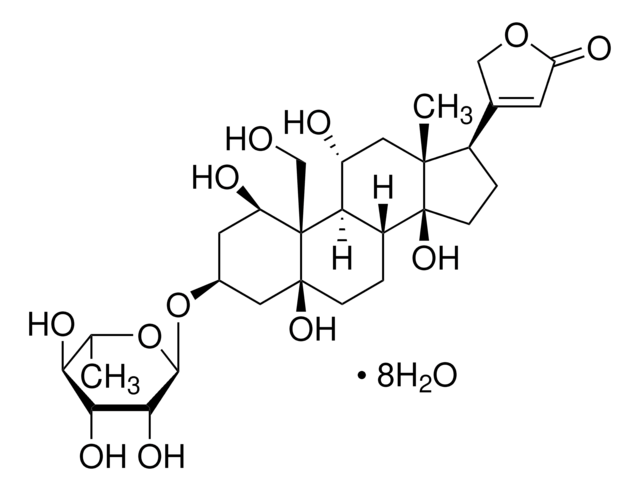Key Documents
M2786
3-Maleimidobenzoic acid N-hydroxysuccinimide ester
crystalline
Synonim(y):
MBS
About This Item
Polecane produkty
Postać
crystalline
Poziom jakości
przydatność reakcji
reagent type: cross-linking reagent
mp
175-177 °C (lit.)
rozpuszczalność
DMSO: ≤20 mg/mL
grupa funkcyjna
NHS ester
maleimide
temp. przechowywania
−20°C
ciąg SMILES
O=C1CCC(N1OC(C2=CC=CC(N3C(C=CC3=O)=O)=C2)=O)=O
InChI
1S/C15H10N2O6/c18-11-4-5-12(19)16(11)10-3-1-2-9(8-10)15(22)23-17-13(20)6-7-14(17)21/h1-5,8H,6-7H2
Klucz InChI
LLXVXPPXELIDGQ-UHFFFAOYSA-N
Szukasz podobnych produktów? Odwiedź Przewodnik dotyczący porównywania produktów
Powiązane kategorie
Opis ogólny
Zastosowanie
- in the fixation of pollen in Arabidopis
- as a component of Murashige and Skoog (MS) medium to stabilize F-actin in Eucalyptus root hairs
- in the fixation of F-actin labelled pollen tubes of Lilium davidii
Działania biochem./fizjol.
Inne uwagi
Kod klasy składowania
11 - Combustible Solids
Klasa zagrożenia wodnego (WGK)
WGK 3
Temperatura zapłonu (°F)
Not applicable
Temperatura zapłonu (°C)
Not applicable
Certyfikaty analizy (CoA)
Poszukaj Certyfikaty analizy (CoA), wpisując numer partii/serii produktów. Numery serii i partii można znaleźć na etykiecie produktu po słowach „seria” lub „partia”.
Masz już ten produkt?
Dokumenty związane z niedawno zakupionymi produktami zostały zamieszczone w Bibliotece dokumentów.
Klienci oglądali również te produkty
Nasz zespół naukowców ma doświadczenie we wszystkich obszarach badań, w tym w naukach przyrodniczych, materiałoznawstwie, syntezie chemicznej, chromatografii, analityce i wielu innych dziedzinach.
Skontaktuj się z zespołem ds. pomocy technicznej









